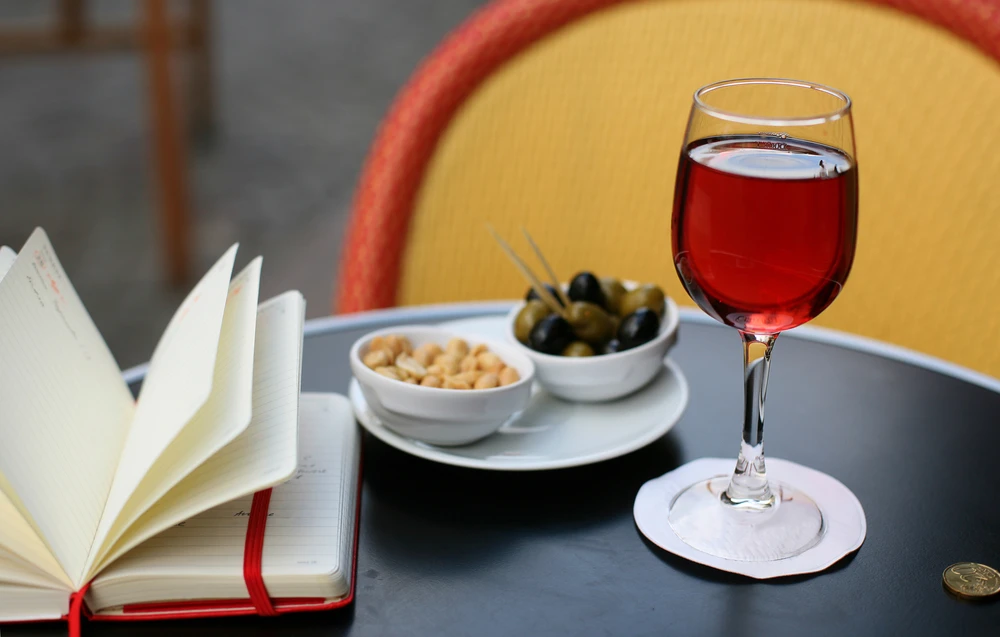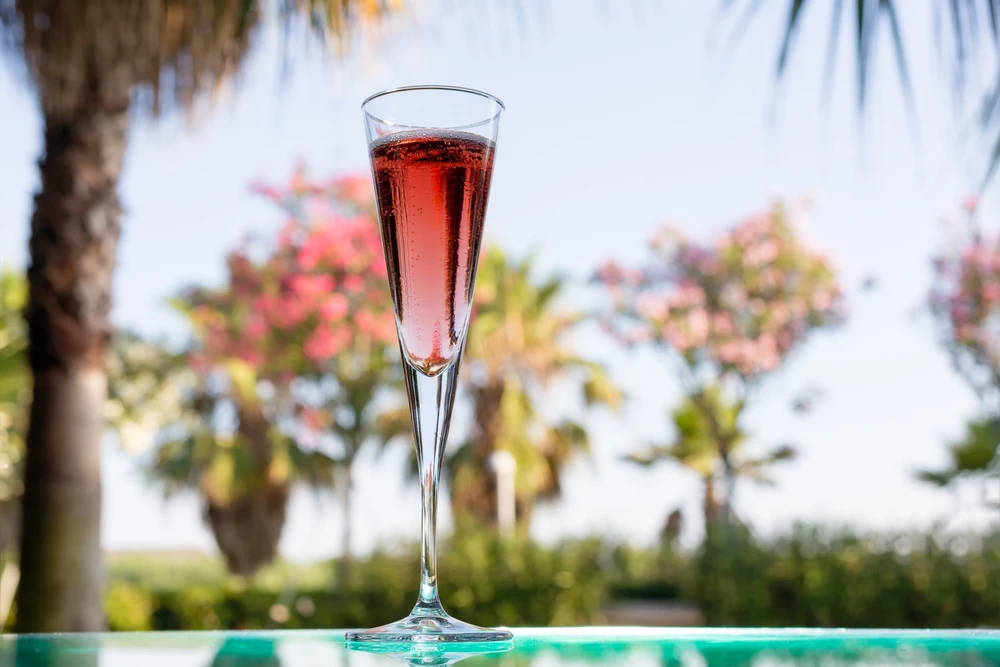Le Kir: an amusing story :
Kir / Blanc cassis was invented in Dijon, the capital of Burgundy. Photo selected by monsieurdefrance.com; selenar via depositphotos
Two key Burgundy products: white wine and crème de cassis
The kir, or rather blanc cassis, was invented in Dijon, Burgundy, using two of the region's most common products: white wine and crème de cassis. This crème de cassis, an alcoholic cream, originated in the 18th century, but it was in the 19th century that it was concocted on an industrial scale and spread to the cafés of Burgundy, as well as Paris, before becoming popular enough in France to feature behind any self-respecting bar. Needless to say, Burgundy is a great wine-growing region. Today, it boasts some 3,000 wineries. This is where you'll find Côte de Beaune, Nuit Saint Georges and Chablis. In fact, it's Chablis that goes into the original composition of kir.
A blanc cassis in a French bistro. Photo chosen by monsieurdefrance.com: Encrier via depositphotos
Which we came up with the idea of mixing.
It was in the 20th century that the idea of blending the two came about: crème de cassis and white wine. There are several schools of thought to explain the origin. Some say it was a waiter at Dijon's Café Montchapet who came up with the idea and had the then mayor taste it in the 1900s. Others say it was Madame Foveau, a town councillor, who suggested mixing Chablis with the easily-produced crème de cassis, which had the merit of masking the taste of a wine that, at the time, wasn't great. Initially, it was a "blanc cassis" that was served, but the person who popularized the name kir was Monsieur Kir. The mayor of Dijon.
Canon Kir
In 1950, the mayor of Dijon was Canon Kir. Félix Kir (1876-1968). Mayor of Dijon, but also a member of parliament (he was easily recognizable at the Assemblée Nationale, where he sat in his cassock and was not the last to speak), he did his utmost to help sell the large production of white Burgundy wine by having it served with crème de Cassis. It was this habit that led the LeJay-Lagoute company to propose a marketing coup: use "Kir", his family name, to baptize its crème de cassis. In a very serious letter dated November 20, 1951, Canon Kir agreed to give his name to the drink. A registered, and therefore private, name, the Kir name has become a common name often used, even when the cream used to make a kir is not always crème Kir. In any case, it's a brand name, and a great savoir-faire, so you might as well use Kir to make a kir.
Ideas for concocting a kir
A kir royal (with sparkling wine). Photo chosen by monsieurdefrance.com: emolchanova via depositphotos.com
The traditional Kir recipe
The traditional recipe for kir-cassis is 1/5 Dijon crème de cassis and 4/5 white wine (rather Chablis, or at least Burgundy white). Roughly speaking: 20% crème, 80% wine. Note that the proportions have changed over time. Originally, Canon Kir used 1/3 crème de cassis and 2/3 white wine, which was very, very sweet.
Change your alcohol cream
There are many other types of crème d'alcool besides the traditional crème de cassis. In the 1990s, Kir Pêche was very popular, with crème de pêche. It can also be made with crème de mûre. Some people like kir leetchis, for example.
Or change the white wine and make a kir royal, Breton or even Quebecois.
You can also keep the crème de cassis but replace the wine. Adding a sparkling wine (Crémant, Vouvray...) makes a kir royal. Add champagne and you get a kir impérial (although some people also call it a kir royal if you add champagne). The Bretons add Breton cider to make a kir breton, so the Normans, with their Normandy cider, may offer you a kir normand. The Quebecois also invented kir quebecquois , removing the crème de cassis and replacing it with maple syrup (2cl maple syrup to a glass of white wine).
Blackcurrant cream. Photo chosen by monsieurdefrance.com: Igorr1 via Depositphotos.com
The Lejay-lagoutte house
This company, which owns the "Kir" name, continues to make the Dijon crème de cassis for which it is famous. On its official website, you'll find a host of Kir-based cocktail recipes, including the French Martini, Helen's Dream and Happy Days. Don't hesitate to take a look.
Warning: alcohol abuse is dangerous for your health. Drink in moderation.








